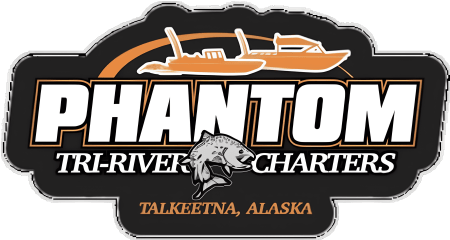What Is King Salmon?
Alaska is one of the best places in the world for salmon fishing, so it should come as no surprise that the official state fish of Alaska is the giant king salmon (Oncorhynchus tshawytscha), and has been since 1962.
If you’re not from Alaska, you might be surprised when you visit by just how ubiquitous salmon is. You’ll find it cooked in all sorts of ways, including smoked, baked, pan-seared or even made into spreads for crackers. You’ll also find salmon in local artwork, in taxidermy shops, on t-shirts and in souvenirs. Salmon is truly one of the most important animals in the Alaskan economy.
If you’re planning to enjoy some king salmon fishing in Alaska, here’s a bit of information about the king salmon and what makes it such a remarkable fish.
Facts about the king salmon
The king salmon is a fish native to the Pacific coast in North America, and is the largest of all the types of salmon found in the Pacific. Adult king salmon can grow to be more than 100 pounds, which can make them a fun challenge for anglers.
King salmon have a unique life cycle. They’ll hatch in freshwater, then travel to the ocean to spend part of their life there, then return to the same freshwater stream in which they were born to spawn, after which they die. There are some salmon that will travel more than 2,000 miles through rivers over the course of just 60 days to get back to the stream in which they were born. During that migration, they do not feed, and they get into worse and worse shape as they travel, because they use stored body materials for energy and to feed their reproduction.
Once they get to their spawning point, female salmon will deposit anywhere from 3,000 to 14,000 eggs in gravel nests. Once the new fish hatch, they’ll live in the gravel for a few weeks until they’ve completely absorbed the nourishment of the yolk sac. At that point, young salmon will eat plankton and then insects until they have grown enough to be able to migrate to the ocean (in their second year of life). Once they’re out at sea, the salmon will feed on a variety of organisms found in the ocean, including herring, squid, crustaceans and sand lance. Once they reach sexual maturity (between three and seven years of age), salmon will then go back to their home streams to spawn again, and the cycle continues.
This means there are many thousands of generations of salmon that are born in and return to individual streams. The delicate nature of their ecosystem cannot be understated—disrupting the spawning process could be catastrophic to a salmon population in some circumstances.
If you’re interested in learning more about king salmon, or want some tips about fishing for king salmon in Alaska, we encourage you to contact Phantom Tri-River Charters today. Our experts are ready to help ensure your fishing trip is successful and enjoyable!
